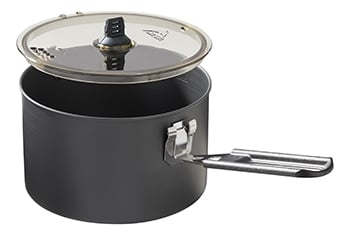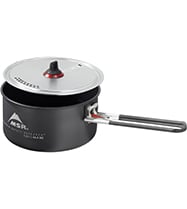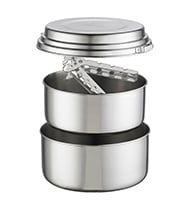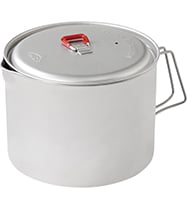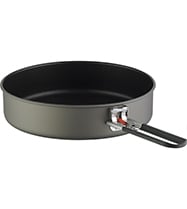Backpacking Cookware 101: Titanium vs. Aluminum vs. Stainless Steel
Backpacking cookware comes in a variety of materials to meet the priorities of everyone, from fastpackers to dedicated backcountry chefs. Each material has its key benefits—understanding them will help you pick the cook set that’s aimed at your needs, both on the trail and in the “kitchen”. Here’s a look at the three materials used in MSR cookware and why you might choose one over the other.

Hard-Anodized Aluminum: All-around, Lightweight Versatility
Hard-anodized aluminum is the cookware of choice for all-around backcountry use. It conducts heat evenly and is lightweight and easy to clean, especially when coated with a nonstick finish. Because it disperses heat uniformly across the cookware surface, aluminum is a good choice for cooking real meals with fresh ingredients or temperature-sensitive foods like eggs or pancakes.
Aluminum is also extremely efficient, meaning it transfers heat quickly. This helps to save fuel, allowing fastpackers and solo travelers to shed weight and move more quickly.
MSR aluminum pots feature a hard-anodized finish, a production process that makes the material very durable. Many backpackers choose hard-anodized aluminum because it delivers an excellent balance of durability and lighter weight at an affordable price. MSR’s cook sets and Trail Lite™ Pots feature hard-anodized aluminum pots.
MSR’s Ceramic Pot Sets are hard-anodized aluminum pots with a ceramic nonstick surface. This premium coating allows you to cook like you do at home (with sticky foods like eggs) and enjoy easy cleanup afterward. This ceramic is incredibly durable, handling the abuse of backcountry cooking. It’s also safe at high heat and PFTE- and PFOA-free, allowing you to cook gourmet fare worry-free.
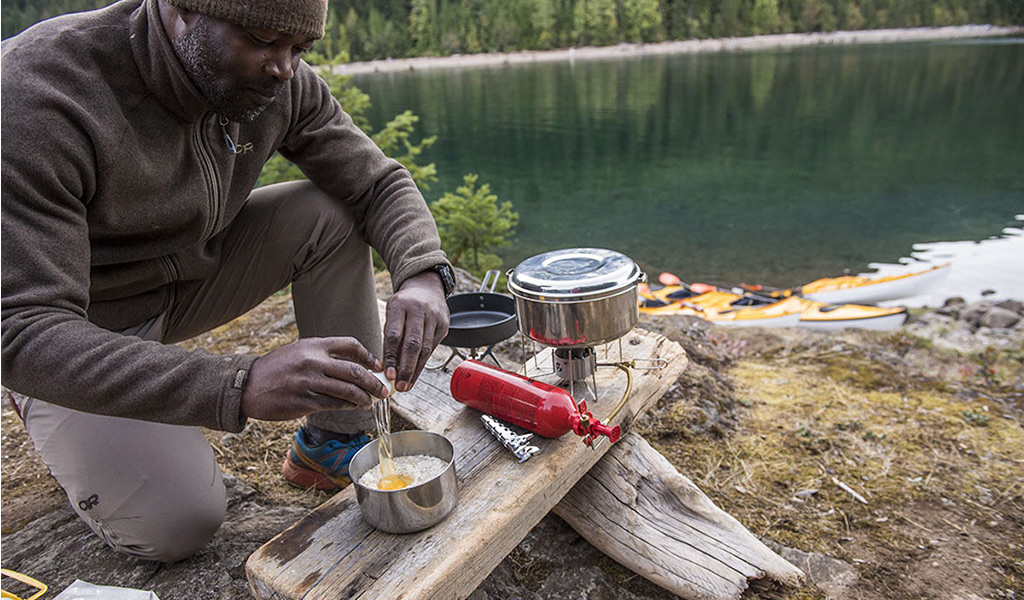
Stainless Steel: Simple Workhorse Durability
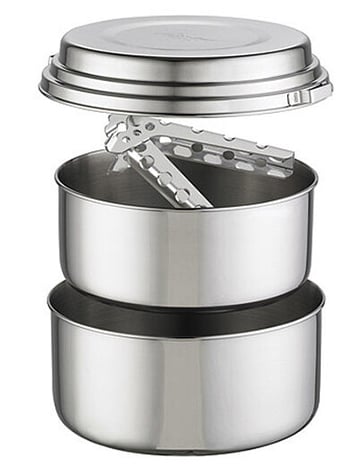 Stainless steel is very durable, so it’s perfect for when your pots take a lot of abuse. This makes it a top choice of backcountry travelers who are hard on their gear, or guides and institutions where cooks prep lots of meals for lots of people.
Stainless steel is very durable, so it’s perfect for when your pots take a lot of abuse. This makes it a top choice of backcountry travelers who are hard on their gear, or guides and institutions where cooks prep lots of meals for lots of people.
Stainless steel is by far the toughest and most scratch-resistant of the three materials MSR uses, though it weighs a bit more than aluminum and titanium. It’s used to make the simple, dependable systems in the MSR Alpine™ line of camp cookware.
When it comes to cooking, stainless steel lies somewhere between aluminum and titanium in terms of performance and suitability. It does not conduct heat particularly well, which can lead to hot spots and burned food. To get around this issue, our Alpine Fry Pan features a heat-spreading aluminum disc on the bottom. This allows for efficient, even heating in an ultra-durable fry pan that expands your meal options.
People choose stainless steel for its affordability, exceptional ruggedness and simple sophistication.
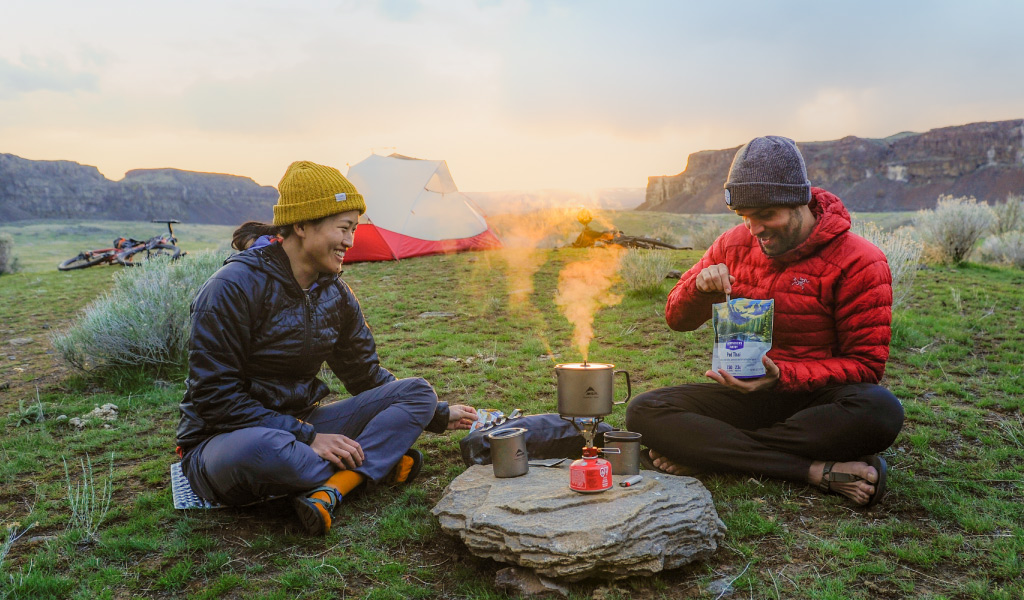
Titanium: The Fast-and-Light Choice
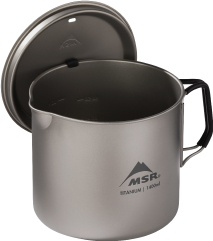 In 1999, the MSR product catalog declared: “You want light? You want strong? You want Titanium.” Indeed, titanium’s biggest advantage is its ultralight performance. Titanium is 45% lighter than steel and stronger than aluminum. It is the lightest cookware material you can buy before you must sacrifice strength. It’s also corrosion-resistant, offering great durability.
In 1999, the MSR product catalog declared: “You want light? You want strong? You want Titanium.” Indeed, titanium’s biggest advantage is its ultralight performance. Titanium is 45% lighter than steel and stronger than aluminum. It is the lightest cookware material you can buy before you must sacrifice strength. It’s also corrosion-resistant, offering great durability.
Titanium pots are ideal primarily for boiling water because they can be made with thin walls and transfer heat very quickly. Like stainless steel pots they tend to develop hot spots, making them less than ideal for cooking real meals. Titanium is favored by the truly fast-and-light crowd, who count their grams and opt for quick boil-only meals after a long, exhausting day.
Titanium is used to forge MSR Titan™ cookware.
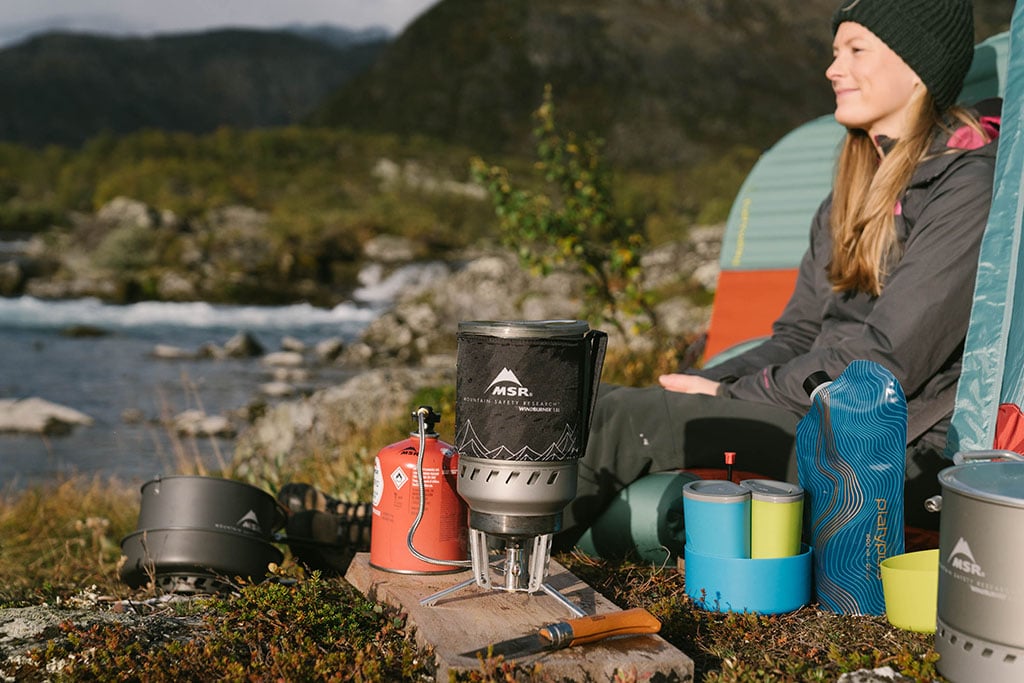
Final Considerations for Backpacking Cookware
Cookware’s efficiency is also dependent on its color, pot diameter and height. Darker pots, especially with dark bottoms, tend to be the most fuel-efficient. As older cookware blackens with use it becomes more efficient than new cookware. Wider-diameter pots are more efficient than narrow ones because more surface area is exposed to the flame and hot exhaust gasses, transferring heat to the system faster.
Next, we’ll look at the perfect pairings of cook sets and stoves based on your adventure. Happy cooking!
Related Posts:
- Backpacking Cookware: Making it All Fit in Your Pack
- Camping Cookware – 10 Essentials for Your Camp Kitchen
- Best Camping Cookware & Stove Pairings
Updated. Originally Published August 24th, 2015.

